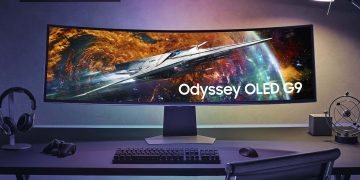The $3,500 Apple Vision Pro seems to be struggling to find its place in the market. While it boasts some of the best visuals and hand tracking in the VR world, the initial hype has quickly dwindled just months after its launch. This is largely due to its sky-high price tag. So, how can Apple make it a formidable competitor to the Meta Quest 3? Apparently, it may require stripping away what makes the Vision Pro stand out.
It’s a challenging time over at Apple’s HQ. Rumor has it they’re working on a more affordable Vision headset, possibly hitting shelves next year with a price range of $1,500 to $2,000. As reported by Bloomberg’s Mark Gurman, a few cost-cutting measures are on the table. One of these is doing away with the EyeSight exterior display, which simulates the user’s eyes. If they had cut this feature from the beginning, they might have had a winner on their hands.
The current prototype of this budget-friendly Vision headset is tagged as N107. The new model could feature a less powerful chip than the M2 in the Vision Pro, even though the pricey version already maxes out its CPU. Apple might also scale back the exterior passthrough capabilities and limit the field of view. However, doing so could sacrifice what makes the Vision Pro stand out in comparison to the $500 Quest 3.
Some of the other options aren’t much better. Drawing from his anonymous inside sources, Gurman shared that Apple has even thought about requiring the budget Vision to connect to an iPhone or Mac. Devices like the $1,800 Spacetop G1 and XReal’s Beam Pro need that additional power from an external device and a wired setup to operate their AR glasses. However, those glasses are far lighter than a full headset. One of the less popular design choices of the Vision Pro was its wired, external battery pack, so adding even more cables would really limit the functionality of the next Vision.
A follow-up to the Vision Pro is now on the horizon for 2026, under the codename N109, according to Gurman. This new device may just need to enhance the comfort and processing power of what’s already among the most visually stunning high-end headsets on the market, although its price makes it inaccessible to many.
Apple isn’t ready to give up on its augmented reality dreams just yet. Gurman notes that the tech giant is still actively recruiting for its VR team, even as analysts believe they’ve lowered 2025 Vision sales forecasts. The big leap forward, aligning with CEO Tim Cook’s original vision, is for genuine AR glasses, though Apple’s team thinks these could still be years away.
While the Meta Quest 3 presents a better value overall, Meta seems to be doubling down on products like the Meta Ray-Bans since they’ve gained unexpected popularity.
Despite recent improvements to visionOS showcased at WWDC, excitement around Apple’s inaugural VR headset remains lackluster. The steep challenges, from limited comfort to its prohibitive pricing, make it a tough choice for most people. Especially when a laptop and phone can handle your work and play just fine, tying the headset to these external devices only highlights how redundant it is compared to something easily tucked into a backpack or pocket.














































